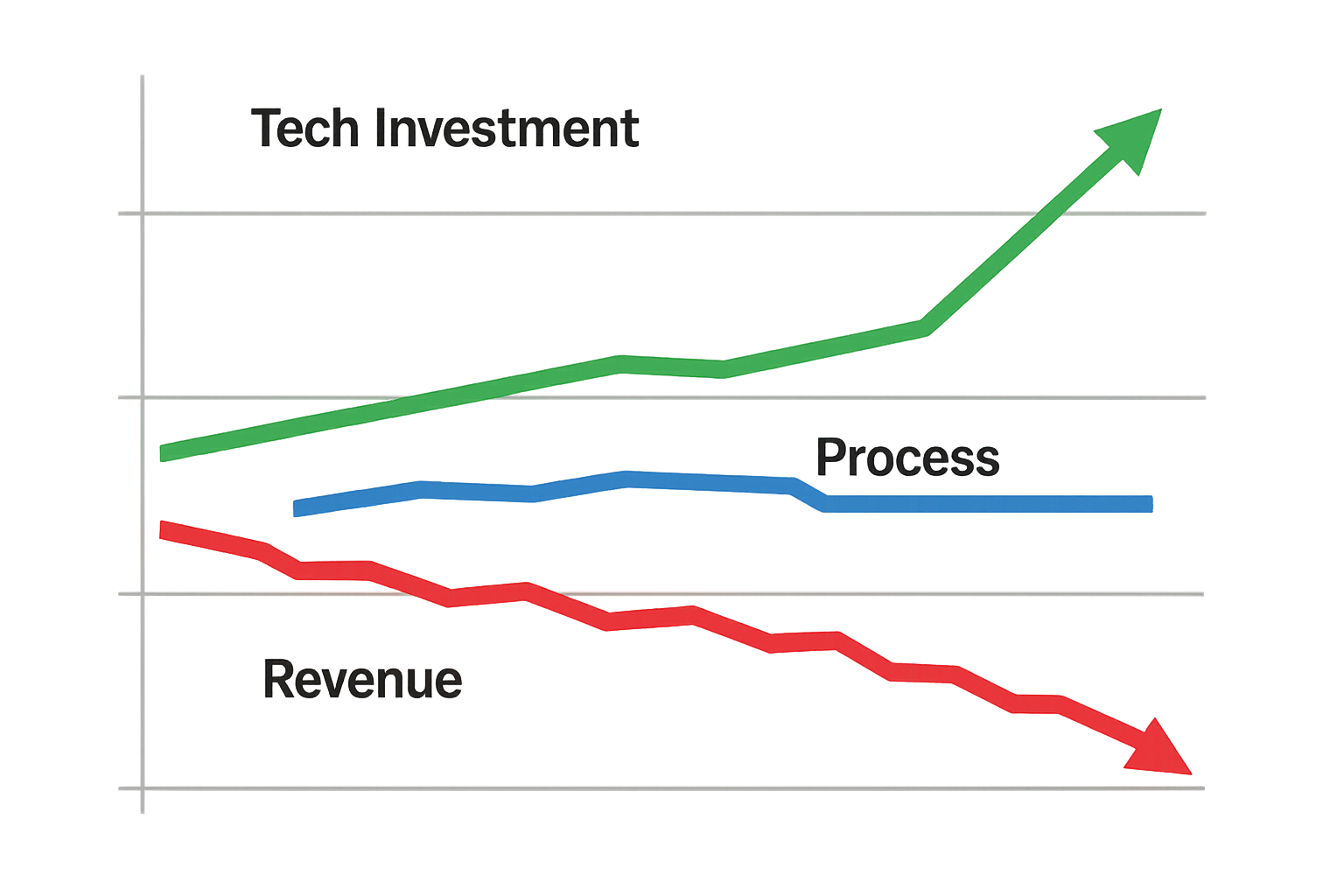Why Technology Alone Won’t Save Your Company
Real growth happens when people, process, and technology move together.
The Costly Illusion of Technology as a Fix
Over the last three decades, I’ve seen countless companies invest millions in new systems with high hopes for transformation. They expected efficiency gains, better customer engagement, and growth. Too often, the outcome was disappointment.
The technology itself wasn’t broken. The implementations went live, systems were installed, and reports ran on schedule. But the results never matched the investment. Why? Because the company treated technology as the solution, when in reality it was only one piece of the puzzle.
The truth is simple: companies rarely fail because of technology — they fail because their people, processes, and technology aren’t aligned.
Three Ways Companies Miss the Mark
I’ve seen the same patterns repeat themselves in organizations of every size, from startups to Fortune 50 enterprises:
Technology without process creates chaos.
You can install the best POS or CRM system in the world, but if the underlying workflows are outdated or inconsistent, the new system just makes bad processes run faster.
Process without people creates resistance.
Companies often redesign processes on paper but neglect the employees who must carry them out. Without buy-in, even the most elegant design will fail.
People without technology creates limitations.
Talented teams can only go so far if the tools they rely on are obsolete. Manual workarounds and siloed systems drain energy and stall growth.
Real outcomes happen only when all three move together.
Lessons From the Field
At a $1B enterprise restaurant chain, I led the organization through multiple point-of-sale (POS) implementations across hundreds of restaurants. On the surface, those projects were about technology. But the real challenge — and the real success — came from aligning operations, finance, and training with the technology rollout. Without that cross-company effort, we would have had expensive software and frustrated employees.
At a mutual insurance company, I served as SVP and CIO during a pivotal growth phase. We implemented a new rating system that enabled the company to expand from two states to five. The system itself mattered, but the outcome — more than 60% revenue growth — came from close collaboration across underwriting, compliance, and finance. It was the integration of technology and business leadership that made growth sustainable.
These stories repeat across industries: manufacturing, insurance, retail, food production. The names and tools change, but the lesson doesn’t — technology is the enabler, not the solution.
The Real Work of Integration
True transformation requires integration:
Aligning strategy with execution. IT leaders can’t just “keep the lights on.” They need a seat at the table where growth and market strategy are set.
Bringing process discipline to ad hoc environments. Without documented, repeatable workflows, scaling is impossible.
Bridging silos between departments. Technology touches every corner of a company. Leaders who build trust across functions make technology investments stick.
Leading people through change. New systems succeed only if employees feel confident and engaged in using them.
This is the work that turns technology from a cost center into a growth engine.
What Companies Need From CIOs Today
The role of CIO has evolved. It’s no longer enough to be the technologist in the room. The CIO must be an executive integrator, capable of balancing enterprise-scale strategy with mid-market agility. CIO should stand for Chief Integration Officer.
That means:
Translating business goals into technology roadmaps.
Driving cross-company initiatives that tie operations, finance, sales, and customer service together.
Knowing when to push for modernization and when to protect stability.
Keeping the company resilient, scalable, and adaptable in the face of constant change.
In other words, CIOs aren’t just running IT — they’re aligning the organization for outcomes.
Closing Thought
I’ve had the privilege of leading technology and integration efforts in companies of every size. What I’ve learned is this: success doesn’t come from the tools you buy. It comes from how you align your people, processes, and technology into a unified system that drives outcomes.
The companies that win aren’t the ones with the newest software. They’re the ones that build integration into their DNA.
That’s where real growth — sustainable growth — is found.
